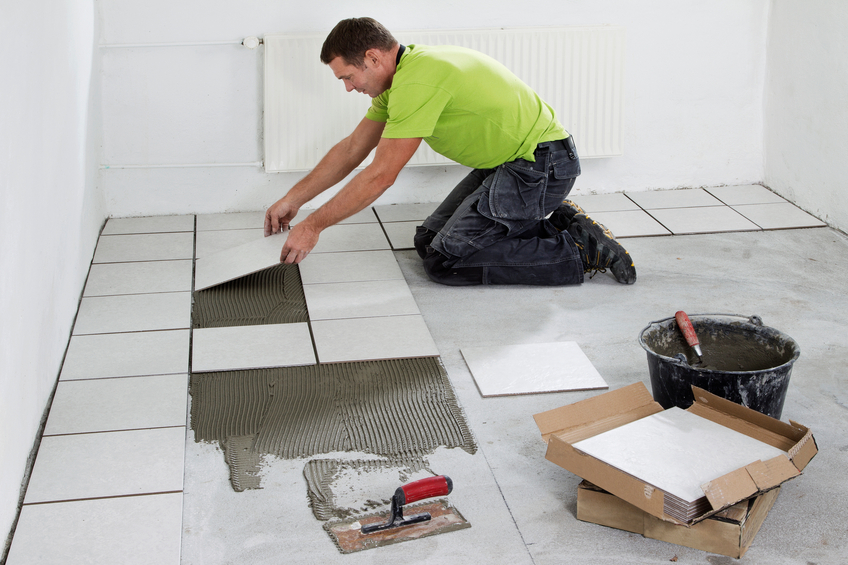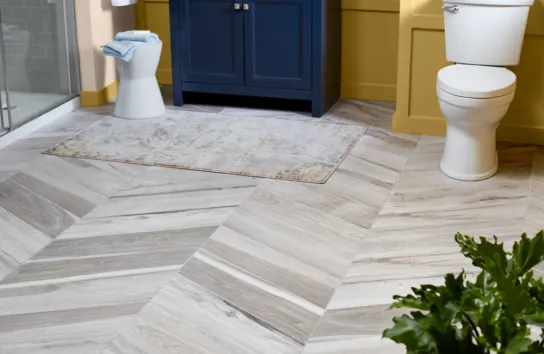Your Relied On Companion for Tile Installation Austin and Beyond
Discover the Tricks to Perfect Tile Setup Every Time
Grasping the art of ceramic tile installment involves a collection of specific actions and techniques that, when implemented appropriately, can result in a sleek and smooth finish. By understanding the secrets behind each step, you can guarantee that your tile setup not just fulfills yet surpasses your assumptions.
Appropriate Surface Preparation
Effective ceramic tile setup hinges significantly on careful surface prep work to make certain a remarkable outcome. The surface should be clean, completely dry, and structurally seem to stop future issues such as loosened floor tiles or fractured grout.
To ensure correct bond, it is recommended to rough up smooth surface areas via sanding or scarifying. Furthermore, applying a primer can improve bonding between the substrate and the floor tile adhesive. Uneven surfaces should be leveled utilizing a self-leveling substance to avoid lippage and guarantee a smooth finish.
Furthermore, inspecting for possible sources of wetness is essential, as excess moisture can cause mold growth and damages the ceramic tiles over time. Utilizing a dampness obstacle or waterproofing membrane layer in damp locations like kitchens or restrooms is necessary to shield the floor tiles from water damages. By diligently preparing the surface area before floor tile setup, one can develop a visually appealing and resilient tiled location that will stand the test of time.

Selecting the Right Adhesive
Selecting the appropriate adhesive is a crucial step in ensuring the successful installation of tiles. The kind of sticky you pick will rely on different aspects such as the kind of floor tile, the substratum product, and the location of the installment. There are different types of adhesives available out there, including thin-set mortar, mastic, and epoxy.

Epoxy adhesives are exceptionally resilient and waterproof, making them perfect for areas susceptible to moisture such as bathrooms or cooking areas. They are also appropriate for setting up glass or metal tiles. When choosing an adhesive, make certain to adhere to the supplier's suggestions and take into consideration the specific demands of your floor tile installation task.
Precision Cutting Methods
Making use of exact reducing strategies is necessary for accomplishing accurate and seamless tile setups. Among the most usual tools utilized for accuracy cutting in tile installation is the ceramic tile cutter. Ceramic tile cutters come in different kinds, including manual ceramic tile cutters, electrical damp saws, and handheld tile cutters. Hands-on ceramic tile cutters are appropriate for straight cuts on ceramic and porcelain floor tiles, offering precise and clean edges. Electric wet saws, on the various other hand, are suitable for cutting tougher products like rock and thicker tiles with accuracy and convenience. Handheld ceramic tile cutters provide transportability and ease for smaller cutting jobs or elaborate cuts.
In addition, using tools like tile scribes or glass cutters can assist in racking up and snapping tiles with precision. By grasping these precision cutting techniques, tile installers can make certain an expert coating and a visually appealing result in their tile jobs.

Grout Application Tips
When transitioning from precision reducing techniques to grout application in tile installation, interest to information and method is paramount for attaining a remarkable surface. Grout serves not only as a functional component that fills up the gaps in between ceramic tiles however also plays a substantial duty in the total visual look at this web-site of the installation. To ensure an effective grout application, start by selecting the proper type and color of grout that enhances the floor tiles. Mix the grout according to the maker's directions, their explanation guaranteeing a lump-free and smooth consistency.
Once the grout is used, utilize a moist sponge to clean the ceramic tiles, making sure not to eliminate cement from the joints. Adhering to these cement application ideas will result in a properly set up floor tile surface area that improves the appeal of any kind of space.
Finishing Touches and Upkeep
To finish the tile installation project properly, attention to detail during the finishing touches and normal maintenance is crucial. After the grout has actually dried out and the tiles are securely in area, the last steps entail making certain that all edges are effectively sealed.
Normal maintenance is crucial to protecting the appeal and capability of your tiled surfaces. A straightforward regimen of sweeping or vacuuming complied with by wiping with a gentle cleaner can aid maintain your ceramic tiles looking immaculate (tile installation austin). For locations that are often exposed to dampness, such as kitchens or washrooms, regular resealing of grout lines is suggested to prevent mold and mold development
Final Thought
To conclude, accomplishing excellent tile installment each time needs focus to detail and appropriate techniques. By concentrating on surface preparation, choosing the right adhesive, utilizing precision reducing methods, using cement very carefully, and do with attention to detail, you can ensure a professional-looking outcome. Remember to comply with these steps and maintain your tiles on a regular basis to lengthen their lifespan and maintain them looking their ideal.
One of the most typical devices made use of for accuracy cutting in tile setup is the floor tile cutter. Ceramic tile cutters come in different kinds, consisting of manual ceramic tile cutters, electric damp saws, and handheld tile cutters. Hands-on ceramic tile cutters are appropriate for straight cuts on ceramic and porcelain ceramic tiles, offering clean and accurate edges. Furthermore, making use of tools like floor tile scribes or glass cutters can help in scoring and snapping tiles with precision. By grasping these precision reducing methods, ceramic tile installers can make certain a professional coating and an click this site aesthetically appealing result in their tile projects.